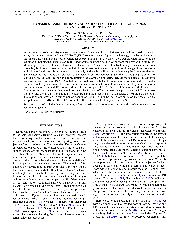摘要
We describe approximate axisymmetric computations of the dynamical evolution of material inside radio lobes and X-ray cluster gas cavities in Fanaroff-Riley II (FRII) sources such as Cygnus A. All energy is delivered by a jet to the lobe/cavity via a moving hotspot where jet energy dissipates in a reverse shock. Our calculations describe the evolution of hot plasma, cosmic rays (CRs), and toroidal magnetic fields flowing from the hotspot into the cavity. Many important observational features are explained. Gas, CRs, and field flow back along the cavity surface in a %26quot;boundary backflow%26quot; consistent with detailed FRII observations. Computed ages of backflowing CRs are consistent with observed radio-synchrotron age variations only if shear instabilities in the boundary backflow are damped and we assume this is done with viscosity of unknown origin. We compute a faint thermal jet along the symmetry axis and suggest that it is responsible for redirecting the Cygnus A nonthermal jet. Magnetic fields estimated from synchrotron self-Compton (SSC) X-radiation observed near the hotspot evolve into radio lobe fields. Computed profiles of radio-synchrotron lobe emission perpendicular to the jet reveal dramatically limb-brightened emission in excellent agreement with FRII observation, although computed lobe fields exceed those observed. Strong winds flowing from hotspots naturally create kiloparsec-sized spatial offsets between hotspot nonthermal X-ray inverse Compton (IC-CMB) emission and radio-synchrotron emission that peaks 1-2 kpc ahead where the field increases due to wind compression. In our computed version of Cygnus A, nonthermal X-ray emission increases from the hotspot (some IC-CMB, mostly SSC) toward the offset radio-synchrotron peak (mostly SSC).
- 出版日期2012-8-10
